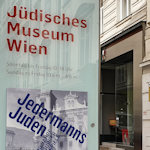The annual Salzburg festival counts as one of Europe’s most renowned cultural events. The Jewish Museum’s Everyman’s Jews exhibition looks back at over a century of festival history and Jewish involvement within it.
- Examines the critical role of Jewish contributors in the festival success story
- Also explores the impact of anti-semitism in this context
- Features such giants as Max Reinhardt and Bruno Walter
- Expertly curated by Sabine Fellner and Marcus G. Patka
- Usual museum ticket or a relevant sightseeing pass gets you in
- Runs Jul 14 – Nov 21, 2021
- See also:
- Current and scheduled history exhibitions in Vienna
100 years of the Salzburg Festival
(A performance of A Midsummer Night’s Dream in 1927 © ASF_PhotoEllinger)
Austria often manages the trick of taking a local event and turning it into a global phenomenon. Like the New Year’s concert, broadcast to over 90 countries.
The same can be said of the famous Salzburger Festspiele (the Salzburg Festival), a huge annual event featuring opera, theatre, classical music and other performing arts that attracts visitors from around the world.
The festival began in 1920 with a performance of the morality play Jedermann (Everyman) in front of Salzburg cathedral, a tradition that continues today and forms the absolute highlight of the event. To play the title role of Everyman is an honour claimed by such international names as Klaus Maria Brandauer and Maximilian Schell.
Max Reinhardt (1873 – 1943), the legendary film and theatre director, put on that first performance. And so began a long history of Jewish involvement with the Festspiele.
The Jewish Museum’s Everyman’s Jews exhibition explores that history and the lives of various Jewish personalities that made significant contributions to the festival’s rise to global prominence.
Reinhardt, for example, remained a leading figure as a cofounder of the event and the major driving force behind it. Never-before seen objects from his estate feature among the exhibition displays, alongside a dynamic mix of art, films, documents, and other objects that illustrate the biographical, social and cultural threads that run through the Jewish Festspiele story.
Other important Jewish contributors include, for example:
- The writer Berta Zuckerkandl (1864 – 1945), another cofounder of the festival
- The great Bruno Walter (1876 – 1962), who conducted the Wiener Philharmoniker many times in Salzburg (for the first time in 1925 and the last in 1956)
- Lothar Wallerstein (1882 – 1949), who staged Wagner operas at the festival during Austria’s early years of far-right politics
- Arturo Toscanini (1867 – 1957), who conducted numerous concerts and operas in Salzburg in the 1930s
Lovers of theatre history can expect a number of delights. For example:
- Reinhardt’s handwritten stage-direction notes for a 1933 production of Faust
- A signed program from that first Everyman
- Architect Oskar Strnad’s preliminary 1926 set designs for The Magic Flute
- A film excerpt of Tilly Losch in the Dance of Hands from 1927.
Sadly, the rise of Austrofascism and eventual annexation of the country by Nazi Germany had a huge impact on Jewish involvement in the festival.
We see, for example, a letter from Reinhardt with instructions to seek vandalism insurance after his Salzburg residence was attacked by Nazi thugs in 1934: an object of particular poignancy when you know what was to come in the next few years.
Political developments added fuel to the existing fires of anti-semitism in the city; most Jewish performers never returned to Salzburg after WWII (or were never invited back).
Max Reinhardt, for example, died in New York in 1943. His grave does little justice to his key role in European and global theatre as a pioneer of modern approaches to stage design and direction. Thankfully, Everyman’s Jews redresses the balance somewhat.
Tickets and dates
Explore the Salzburg Festival’s Jewish personalities from July 14th to November 21st, 2021. Any valid ticket or sightseeing pass for the museum includes access to the exhibition.
And if the topic inspires you to visit Salzburg itself, the train can get you there in under 2.5 hours for a quick day trip.
The city is quite compact, and rather beautiful. Max Reinhardt, for example, bought and renovated the city’s Schloss Leopoldskron, known as a film location for The Sound of Music.
How to get to the exhibition
Find your way to the Jewish Museum site on Dorotheergasse. Everyman’s Jews occupies the main exhibition galleries on the first floor.
A smaller one-room exhibition on Hans Kelsen and the Austrian constitution runs concurrently for much of the same time, too.
Address: Dorotheergasse 11, 1010 Vienna

